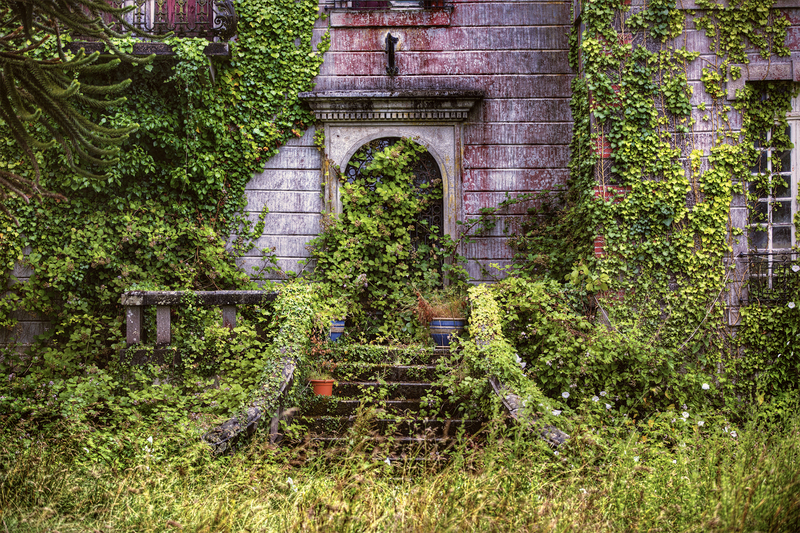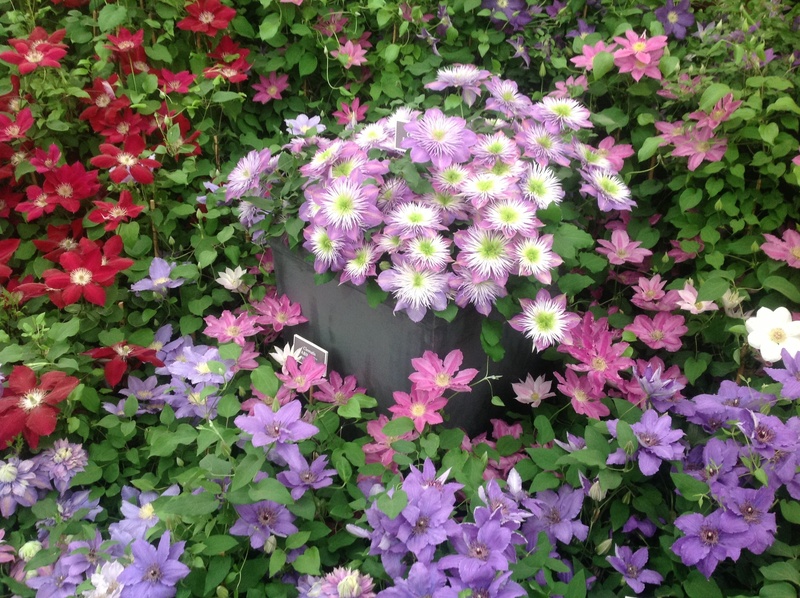Gardening with Dogs: A Harmonious Approach
Posted on 15/09/2025
Gardening with Dogs: A Harmonious Approach
Gardening and dog ownership are two of life's greatest joys. Both provide serenity, joy, and the opportunity to be closer to nature. However, combining dogs and gardening can sometimes present unique challenges for pet owners and plant lovers alike. The solution lies in forging a harmonious partnership between your garden and canine companion. This comprehensive guide explores proven strategies, creative landscaping, dog-friendly plants, and safety tips for sustainable, happy, and productive gardening with dogs.
Why Consider Gardening with Dogs?
Dogs are naturally curious and energetic creatures. For many, the garden is an exciting world of sights, scents, and textures to explore. While their enthusiasm is delightful, it can result in trampled flower beds, dug-up vegetables, or nibbled leaves. Rather than viewing your dog as a threat to your hard-earned garden sanctum, consider the benefits of embracing their presence and designing a garden where both dogs and humans can thrive together.
- Bonds with nature: Spending time outside deepens your dog's engagement with its natural instincts.
- Exercise and stimulation: A well-designed garden provides mental and physical exercise for your dog, reducing boredom and destructive behaviors.
- Healthier lifestyle: Gardening with your dog encourages outdoor activity and relaxation, benefiting both pet and owner emotionally and physically.
Recognizing Canine Behaviors in the Garden
To successfully garden with dogs, it's crucial to understand their natural behaviors and anticipate their needs.
- Digging - Dogs may dig for fun, to seek cooler earth, or in search of prey.
- Chewing - Some dogs, especially puppies, chew plants or objects to soothe teething or out of curiosity.
- Running Paths - Many dogs instinctively patrol and create well-worn paths along fences or perimeters.
Recognizing these habits helps in creating a garden that accommodates them, rather than constantly correcting or restricting your pet.

Designing a Dog-Friendly Garden Layout
1. Create Canine Access Paths
Dogs like to patrol boundaries and chase after scents. Rather than fighting this instinct, incorporate intentional paths alongside fences or within the garden. This way, they can run without damaging your cherished plantings.
- Use compacted gravel, bark mulch, or flat stones for safe, paw-friendly surfaces.
- Position low-growing, resilient ground covers along the edges of paths.
2. Fenced Zones for Safety and Serenity
If you wish to protect certain areas (such as vegetable beds or fragile flowers), consider sectioning off garden zones using fencing:
- Low decorative metal fences can effectively deter most dogs while adding visual charm.
- For energetic jumpers, use taller, secure fencing or raised beds with barriers.
- Install swing gates to allow or deny access as needed.
3. Shady Retreats and Resting Spots
Dogs need cool, comfortable places to rest after play or on hot days. Strategically plant trees, install pergolas, or use shade sails to create shady corners with soft grass or mulch for lounging.
4. Dig Pits and Play Zones
If your dog loves to dig, designate a digging area--a sandpit or loose earth section where digging is encouraged! Bury a few toys or treats there to focus their energy and save your flower beds.
5. Water Features for Hydration and Play
Consider installing a dog-safe water feature, such as a shallow fountain or pondless waterfall. Always ensure water features are not too deep and remain clean. Fresh water stations in the garden keep dogs hydrated and happy.
Pet-Safe Plants for a Dog-Friendly Garden
One of the most important aspects of gardening with dogs is choosing plants that are non-toxic and safe. Many popular plants, while beautiful, can be harmful or even fatal to dogs. Be sure to avoid these and offer alternative, appealing choices.
Popular Dog-Safe Plants
- Marigolds (Tagetes) - Bright blooms, non-toxic, and help repel pests.
- Sunflowers (Helianthus) - Tall, cheerful, and safe for curious canines.
- Camellias - Glossy evergreens with showy flowers, non-toxic to pets.
- Rosemary (Rosmarinus officinalis) - Woody herb safe for dogs and culinary use.
- Snapdragons (Antirrhinum) - Colorful and gentle for dogs that like to sniff blooms.
- Fuchsias - Their drooping flowers are charming and harmless.
- Blueberries - Shrubs provide fruit that's safe in moderation for most dogs.
- Thyme (Thymus vulgaris) - An easy herb, safe and aromatic.
Tip: Always cross-reference plants you wish to introduce with veterinary or reliable pet safety resources, as some common ornamentals (such as lilies, azaleas, daffodils, and foxgloves) are highly toxic to dogs.
Plants that Withstand Paws and Play
A garden inhabited by dogs needs tough, resilient plants that won't be easily damaged by the odd romp or paw traffic:
- Ornamental grasses (like fescue, blue oat grass) - Flexible and quickly bounce back from play.
- Creeping Jenny - Durable groundcover, excellent for filling gaps along paths.
- Lavender and sage - Hardy, aromatic, and can withstand some trampling.
- Hostas - While dog-safe, do be wary if you also have cats, as they are toxic to felines.
- Bachelor buttons - Robust, colorful and pet-friendly.
Addressing Common Challenges: Solutions for Gardening with Dogs
1. Digging and Plant Destruction
Provide outlets for digging, such as dig pits, while discouraging garden bed excavation using:
- Mulching with pine cones, pebbles, or chicken wire under the soil to deter digging.
- Reinforcing bed edges with rocks, logs, or bricks.
- Training your dog to avoid specific zones.
2. Unintended Chewing or Plant Eating
Puppies and inquisitive dogs may sample leaves, stems, or garden decor. Minimize risk by:
- Planting only non-toxic, dog-safe vegetation.
- Training alternatives: Offer safe chew toys in the garden.
- Spraying bitter apple or pet deterrent on vulnerable items (always test first).
3. Urine Burns on Grass
Dog urine is high in nitrogen, which may cause unsightly yellow spots on lawns.
- Water the area immediately to dilute urine concentration.
- Choose resilient grass types (ryegrass and fescue tolerate urine better than bluegrass and Bermuda).
- Encourage your dog to "potty" in a specific area using rocks or mulch and reward training.
4. Keeping Everyone Clean
Muddy paws and coats are inevitable when gardening with dogs. Station a bucket, gentle hose, or towel by the back door for a quick rinse. Consider a designated "dog wash" spot with a gentle sprayer for easy cleanup after garden frolics.
Gardening Safety Tips for Pet Lovers
- Secure Perimeter: Regularly inspect fences and gates for gaps or loose panels that adventurous dogs might exploit.
- Avoid Pesticides & Herbicides: Use organic, non-toxic alternatives whenever possible. Many products are dangerous to pets, even in trace amounts.
- Mulch Matters: Cocoa mulch is toxic to dogs due to theobromine content; stick to wood chips, straw, or gravel.
- Compost Securely: Some compostable items (such as moldy food or coffee grounds) can harm dogs. Use a closed bin and never allow pets to access compost heaps.
- Tool Storage: Always safely store sharp garden tools and chemicals out of your dog's reach.
- Watch Out for Mushrooms: Wild mushrooms can be deadly. Remove any you find, especially after rain.
Training Tips for Harmonious Gardening
Effective training is key to peaceful gardening alongside dogs. Even the most energetic pet can learn boundaries with patience and consistency.
Foundation Obedience
- Teach "leave it" and "off" commands to redirect curiosity from forbidden plants or beds.
- Practice "stay" and "come" commands for safety and supervision.
Managing Garden Access
- Supervise pets in the garden, especially during the training phase.
- Gradually expand their freedom as they demonstrate reliable behavior.
- Reward positive actions and redirection rather than scolding mistakes.
Activities and Engagement: Enriching the Garden Experience
Don't just view the garden as a potential problem area for your dog. Make it a place of joy for both of you! Enhance your bond and your garden's functionality through:
- Agility tunnels or weave poles using garden-safe materials.
- Hidden treat or toy scavenger hunts among safe plants.
- Interactive water features for play on warm days.
- Designated fetch zones with hardy groundcover.
- Afternoon "garden time" for relaxation and exploration together.
The Sustainable and Eco-Friendly Garden with Dogs
Cultivating an environmentally friendly garden benefits everyone--canine, human, and wildlife. Organic practices ensure safety while supporting biodiversity.
Pesticide-Free Gardening
- Hand-pick pests, companion plant, or use safe deterrents (like neem oil or soapy water).
- Encourage beneficial insects such as ladybugs and bees with flowering borders.
Mulching and Soil Health
- Mulching conserves moisture, reduces weeds, and cushions dog paws.
- Use natural, non-toxic mulch varieties for ultimate pet safety.
Water Conservation
- Install rain barrels and drip irrigation. Hydrate your garden efficiently and reduce muddy patches from overwatering.

Real-Life Examples: Successful Gardening with Dogs
Many passionate gardeners have embraced a dual love for flourishing plants and happy dogs. For instance, some have transformed underused corners into "doggy nooks" complete with sand pits, shade, and sturdy herbs. Others share how their border collies helped "manage" garden pests by naturally herding rabbits away under supervision.
Conclusion: Harmony is Possible in Gardening with Dogs
Gardening with dogs is not only possible--it's immensely rewarding. By thoughtfully planning your landscape, choosing dog-safe plants, training consistently, and embracing eco-friendly practices, you'll foster an oasis where greenery and wagging tails blend in perfect harmony. Rather than seeing your dog as an obstacle to a beautiful garden, welcome them as your partner in growth, learning, and outdoor enjoyment.
Start today by observing your dog's habits, adjusting your garden layout, and integrating these tips for a greener, happier, and more harmonious life together.
Ready to create your own dog-friendly garden? Share your questions, stories, and favorite dog-garden moments below!

